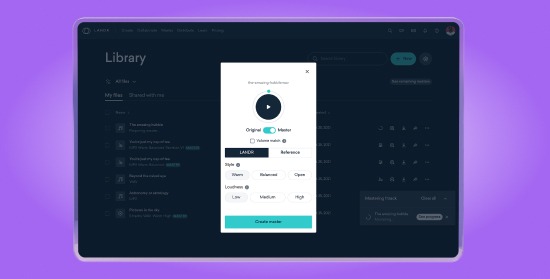
Why Mixing in Mono Is Better for Creating Clarity in Your Mix

Mixing in mono is one of the best ways to produce clear, well-defined mixes. However, it can be tricky to wrap your head around what mixing in mono actually means.
As you’ll soon see, there are important advantages to mixing in mono. But to pull it off, you’ll first have to know how it’s different from mixing in stereo. Let’s jump in.
Mono vs. Stereo
Let’s start with what mono means in music production. Mono refers to single audio signals, such as one vocal track recorded with a microphone.
By adding a second microphone on a separate channel to record that same vocal, you’re now recording in stereo.
That information isn’t too difficult to understand, but it gets more complicated when we talk about mono vs. stereo for mixing.
When you record or import mono signals into your DAW (digital audio workstation), the signal is usually split 50-50 between a listener’s left and right speakers. When the left and right signals differ from each other in any way, the track becomes stereo.
What is mixing in mono?
Mixing in mono isn’t just arranging layers of singular audio tracks in your songs, though it can certainly be that. Beginning the mixing process by listening in mono is arguably the best way to get started. This applies whether your tracks stay mono or not.
Beginning the mixing process by listening in mono is arguably the best way to get started. This applies whether your tracks stay mono or not.
In fact, some producers mix levels in mono throughout most of the process. This is because mono gives you not only clarity while listening, but also the ability to catch mistakes in the mix.
For example, mixing in mono can help you detect phasing issues between different waveforms.
Mixing in mono from start to finish might not work for every producer. But staying in mono long enough to create a solid foundation in your mix is a good idea.
Why mixing mono makes everything easier
With advantages like making specific tracks sound “wider,” why go with mono?
Bigger is not necessarily better, especially when it comes to music production. Believe it or not, sometimes widening your tracks in stereo will make them sound too thin.
In addition to bringing clarity to your mix, mono mixing has some other huge advantages:
1. Ensures mono compatibility (many mono listening environments)
Let’s start with one of the most important reasons why mixing in mono is a good idea. Not every listening format is created equally. If you mix in stereo, you risk shutting out mono listeners.
FM radio stations and everyday listening devices like smart speakers can’t handle stereo tracks.
This means potentially important audio information will literally get left out of what these listeners hear. Some clubs and venues lack the right equipment to play stereo tracks as well.
2. Lets you focus on frequency ranges without distraction
Mixing in stereo delivers loads of distractions, especially when it comes to EQ-ing your tracks. It can be tempting to try to widen and color your mix with stereo effects, but shaping it in mono first is a much better idea.
3. Makes it easier to judge relative volume
Your job as a producer will be much harder than it has to be if your mix has volume issues. The whole song suffers when important parts of the mix are drowned out by louder, less important ones.
Mixing in mono makes adjusting volume levels as easy as possible.
Think of it like a clean slate to work with as opposed to adjusting something that’s already taken shape. You’ll end up doing less work in the long run if you start fresh.
4. Addresses masking issues
When sounds fight for space in your mix, the mono approach helps you shape them correctly by adjusting frequencies.
Stereo mixing covers up masking issues, but ultimately can result in muddier mixes. This approach takes much more work, but it pays off.
Panning after mixing in mono
After mixing in mono, you’ll probably find that panning adds a lot of depth and energy to your mix. This is because the clarity you’ll get from mono mixing gives you a solid foundation to work with.
Once your mix sounds crystal clear, the LCR panning method is a simple one to explore. LCR stands for “Left-Center-Right.” It’s the idea that each track is fully panned to the left, right, or center.
Foundational tracks like vocals and bass are often set to the middle. Important parts, like synth and guitar riffs, are highlighted by being panned to the left or right.
Like mixing in mono, LCR panning is an easy way to bring clarity and directness to your mix. However, just like mixing in mono, it’s not for everyone.
If a solid mono mix reveals a track that isn’t rewarding to listen to, then no amount of production magic will be able to fix it. The quality of recordings and the musical ideas you work with are hugely important.
But if the material you’re working with is solid, a mono mixing approach can set you up for success.
Gear guides, tips, tutorials, inspiration and more—delivered weekly.
Keep up with the LANDR Blog.



